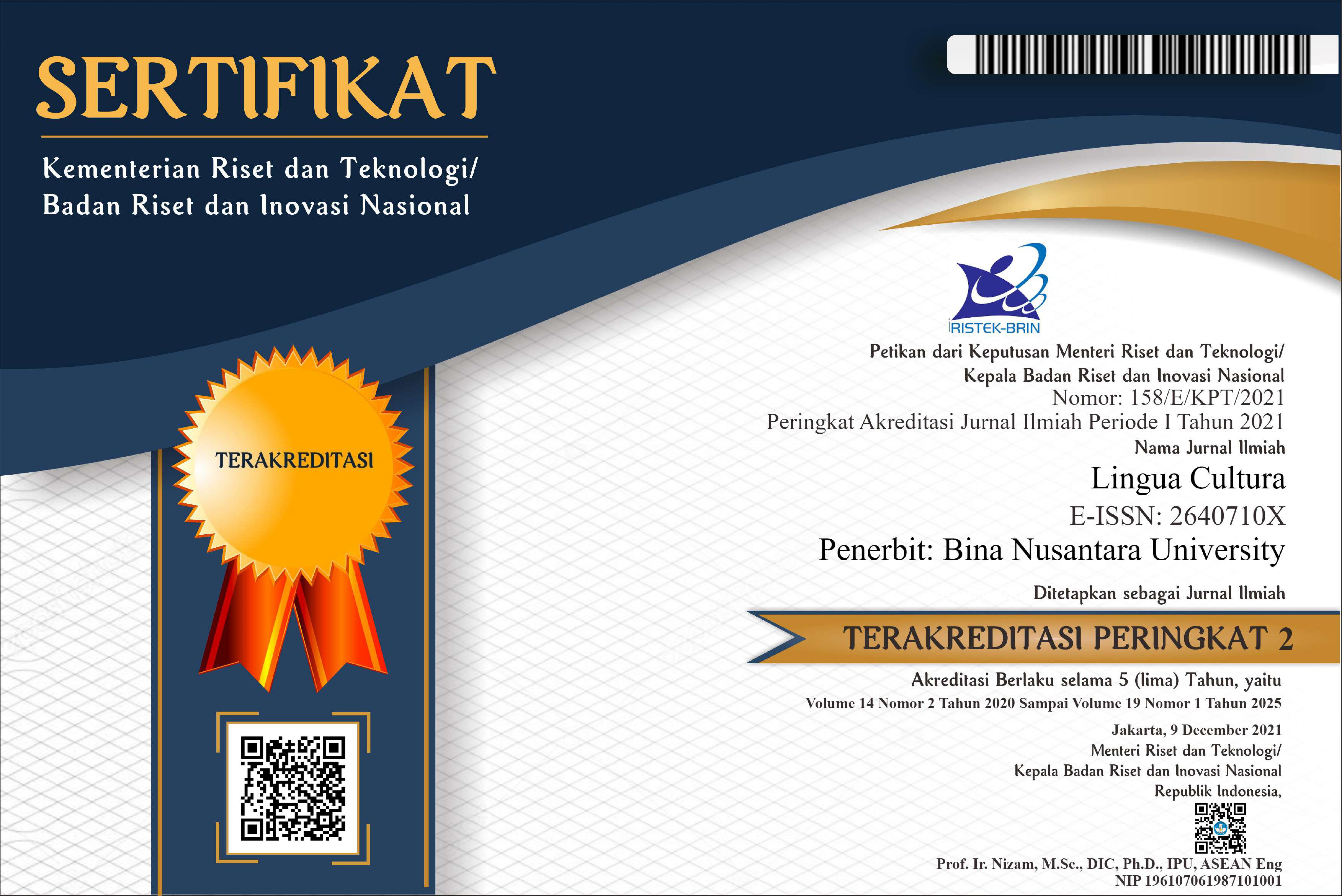Sinonim, Repetisi, dan Antonim dalam Bahasa Jepang: Telaah Majalah Nihongo Journal dan Hiragana Times
DOI:
https://doi.org/10.21512/lc.v3i1.329Keywords:
discourse analysis, synonym, repetition, antonymAbstract
Purpose of this article is to know the kinds of repetition, synonym, and antonym in Japanese. Data were taken from the columns of “NJ News” of Nihongo Journal magazine to analyze the repetition and columns of “Tips for Livings in Japan” in Hiragana’s Times magazine, to discuss the synonym and antonym. The research result indicates that the full repetition is often used to emphasize information; then the context synonym is used in order to create a variation of sentences. Yet, there was also information was not found in the data, which was the antonym of kobutsu no kankei because it did not explain about family.
Plum Analytics
References
Anwar, R.H. (1984). Bahasa Jurnalistik dan Komposisi. Jakarta: Pradnya Paramita.
Brown, G.., and Yule, G.. (1996). Analisis Wacana. Terj.1. Soetikno. Jakarta: Gramedia.
Chaer, A. (1994). Linguistik Umum. Jakarta: Erlangga.
Halliday, M.A.K., and Hasan, R. (1997). Cohesion in English. London: Longman Group Limited.
Hinata, S., and Hibiya, J. (1988). Danwa no Kōzō. Tokyo: Aratake Shuppan Hiragana Times.
Japanese Language Center for International Student. (1994). Chukyu Nihongo. Tokyo: Tokyo University of Foreign Studies.
Leech, G. (1974). Semantics. Harmondsworth: Penguin.
Renkema. (1993). Discourse Studies. Amsterdam: Benyamin.
Sakuma, et.al. (1999). Bunshou Danwa no Shikumi. Tokyo: Oufu.
Tarigan. (1987). Pengajaran Wacana. Bandung: Angkasa.
Tetsuya, K. (1987). Imiron no Hōho. Tokyo: Taishukan Shoten.
_______. “NJ News” Nihongo Journal. (2007). Tokyo: ALC Press.
Downloads
Published
Issue
Section
License
Authors who publish with this journal agree to the following terms:
a. Authors retain copyright and grant the journal right of first publication with the work simultaneously licensed under a Creative Commons Attribution License - Share Alike that allows others to share the work with an acknowledgment of the work's authorship and initial publication in this journal.
b. Authors are able to enter into separate, additional contractual arrangements for the non-exclusive distribution of the journal's published version of the work (e.g., post it to an institutional repository or publish it in a book), with an acknowledgment of its initial publication in this journal.
c. Authors are permitted and encouraged to post their work online (e.g., in institutional repositories or on their website) prior to and during the submission process, as it can lead to productive exchanges, as well as earlier and greater citation of published work.
USER RIGHTS
All articles published Open Access will be immediately and permanently free for everyone to read and download. We are continuously working with our author communities to select the best choice of license options, currently being defined for this journal as follows: Creative Commons Attribution-Share Alike (CC BY-SA)

















